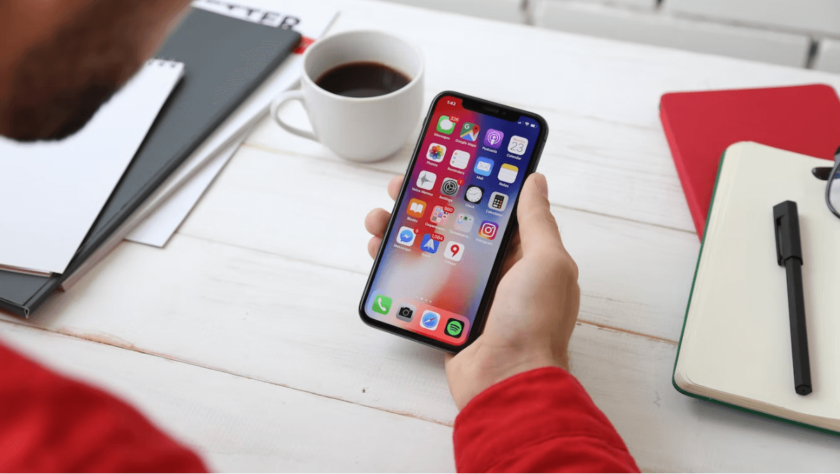If you’ve ever had a great idea for an app, you may have wondered what it takes to create one. The process of creating an app can be daunting, but with the right tools and knowledge, it’s doable. Read on as we discuss the basics of app creation, from coming up with an idea to submitting it to the App Store. So if you’re ready to bring your app idea to life, here are eight things you should know.
1. The Cost Of Making An App
The cost of making an app can vary depending on several factors, such as the type of app you want to create, the features it will have, and who you hire to help you build it. Generally speaking, simple apps can cost around $5,000 to make, while more complex apps can cost upwards of $100,000. If you’re in the workout industry, you might be wondering how much does it cost to create a fitness app and which type would be best. Of course, there are always exceptions to the rule – some apps may cost less than $5,000 to build if they’re very basic, while others may cost more than $100,000 if they’re extremely complex or require specialized knowledge or skills.
2. The App Development Process
The process of developing an app usually begins with an idea. Once you have a general idea for an app, you’ll need to start fleshing it out by coming up with a list of features and functionality. Once you have a solid understanding of what your app will do, you can start planning the design and user experience. Once the design is complete, you can begin building the actual app. This process usually involves writing code, testing the app, and then submitting it to the App Store for approval.
3. The Different Types Of Apps
There are two main types of apps: native apps and web apps. Native apps are designed specifically for one type of device, such as an iPhone or Android phone. They’re usually written in the native language of the device (such as Objective-C or Java), which makes them faster and more reliable. Web apps, on the other hand, are designed to work on multiple devices and platforms. They’re usually written in HTML5, CSS, and JavaScript, which makes them slower and less reliable than native apps.
4. App Store Approval
Once you’ve finished developing your app, you’ll need to submit it to the App Store for approval. The approval process can take anywhere from a few days to a few weeks, and there’s no guarantee that your app will be approved. If your app is rejected, you’ll need to make changes and resubmit it for approval. For some app developers, the approval process can be a frustrating and time-consuming ordeal. To make it easier, you can use App Store Optimization (ASO) to improve your chances of getting approved.
5. In-App Purchases
In-app purchases are a great way to monetize your app and make money from it. With in-app purchases, users can buy virtual goods or unlock premium features within your app. In-app purchases are usually optional, but they can be essential to the success of your app if you’re selling a paid app. For example, if you’re selling a game, you could offer in-app purchases for extra levels or power-ups. To set up in-app purchases, you’ll need to create a product list in iTunes Connect and configure your app’s code to allow users to buy the products. Once you’ve done that, you can start promoting your in-app purchases to users and earning revenue from them.
6. Promoting Your App
Once your app is approved and available for download, you’ll need to start promoting it to get people to download and use it. There are several ways to promote your apps, such as social media marketing, paid advertising, and PR. The best way to promote your app will vary depending on your budget and the type of app you’ve created.
- Social Media: Social media marketing is a great way to promote your app for free. You can use social media platforms like Twitter, Facebook, and Instagram to reach a wider audience and get people interested in your app.
- Paid Advertising: Paid advertising is another effective way to promote your app. You can use ad networks like Google AdWords and Apple’s iAd to place ads for your app on other apps and websites. Paid advertising can be costly, but it’s a good option if you have the budget for it.
- PR: Public relations is another way to get publicity for your app. You can contact bloggers and journalists in your niche and pitch them your app. If they’re interested, they’ll write about it, which will help you get more downloads.
7. App Maintenance
After your app is up and running, you’ll need to regularly update it with new content and features. This process is known as app maintenance, and it’s important to keep your app up-to-date if you want to keep users coming back. App maintenance can also be a great way to generate revenue, as you can charge users for access to new content or features. It might also be necessary to occasionally fix bugs or address security concerns. For example, if you release a new app update that includes a security patch, it’s important to make sure all users install the update.
8. Hiring An App Developer
If you don’t have the skills or knowledge to create an app yourself, you’ll need to hire an app developer to do it for you. When hiring an app developer, it’s important to choose someone who has experience developing apps for your type of device (such as iPhone or Android). You should also make sure that the developer is familiar with the development process and has a good portfolio of previous work. And, of course, you’ll need to agree on a price before hiring anyone.

App development can be a complex and time-consuming process, but it’s worth it if you have a great idea for an app. Follow the tips above to improve your chances of success. Remember, if you don’t have the skills or knowledge to create an app yourself, you can always hire an experienced developer to do it for you.

